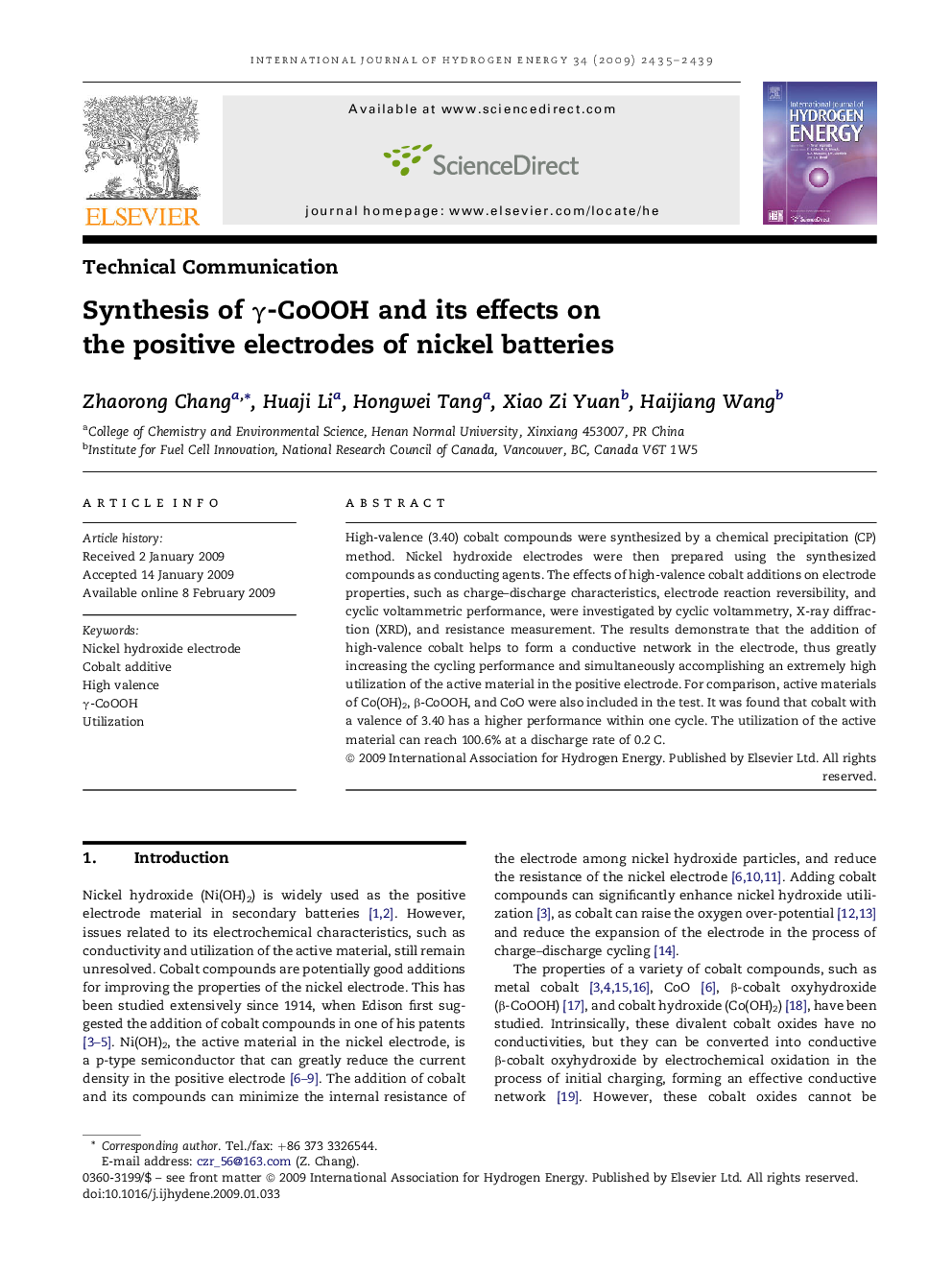| Article ID | Journal | Published Year | Pages | File Type |
|---|---|---|---|---|
| 1283303 | International Journal of Hydrogen Energy | 2009 | 5 Pages |
High-valence (3.40) cobalt compounds were synthesized by a chemical precipitation (CP) method. Nickel hydroxide electrodes were then prepared using the synthesized compounds as conducting agents. The effects of high-valence cobalt additions on electrode properties, such as charge–discharge characteristics, electrode reaction reversibility, and cyclic voltammetric performance, were investigated by cyclic voltammetry, X-ray diffraction (XRD), and resistance measurement. The results demonstrate that the addition of high-valence cobalt helps to form a conductive network in the electrode, thus greatly increasing the cycling performance and simultaneously accomplishing an extremely high utilization of the active material in the positive electrode. For comparison, active materials of Co(OH)2, β-CoOOH, and CoO were also included in the test. It was found that cobalt with a valence of 3.40 has a higher performance within one cycle. The utilization of the active material can reach 100.6% at a discharge rate of 0.2 C.
